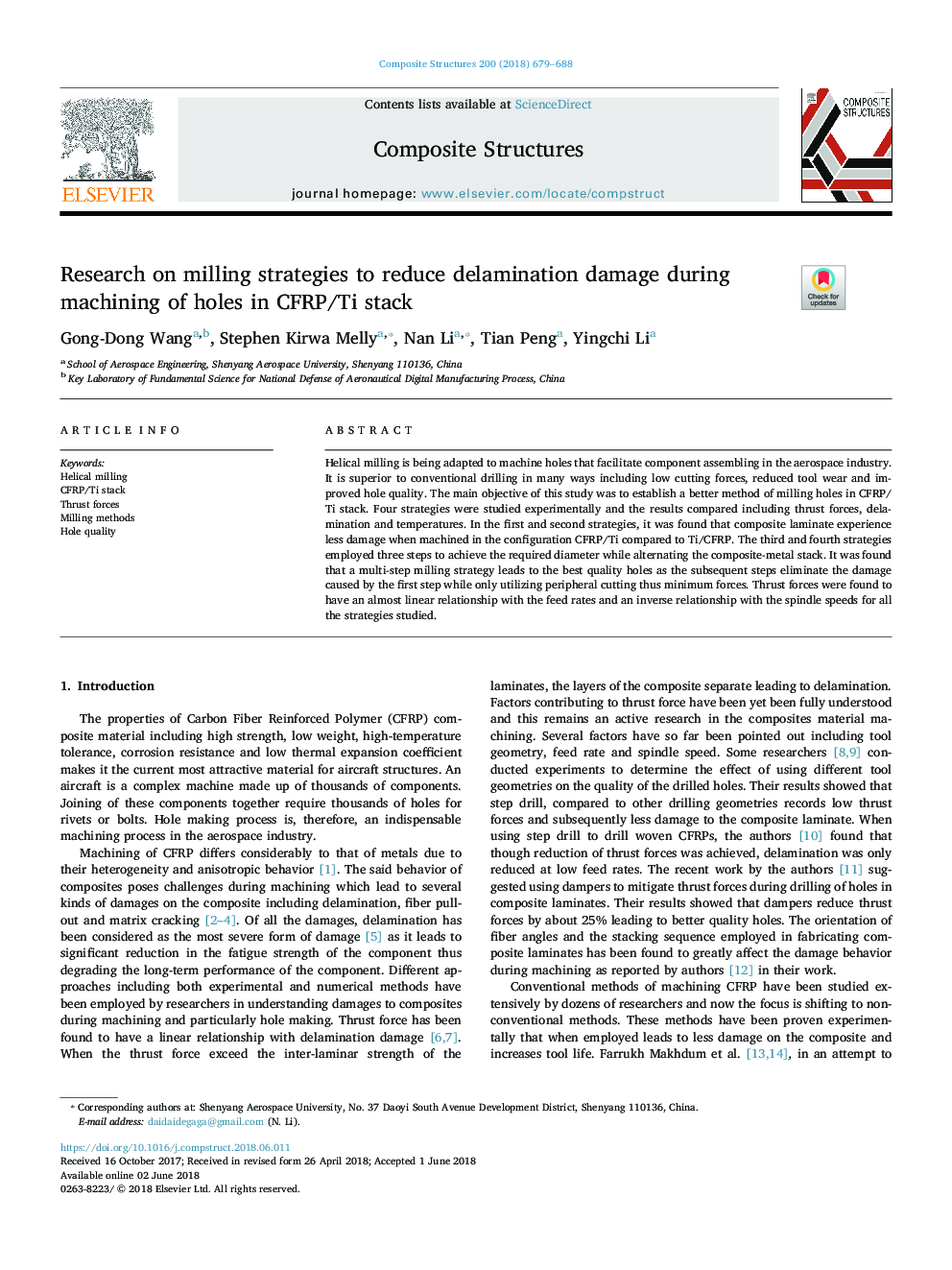| Article ID | Journal | Published Year | Pages | File Type |
|---|---|---|---|---|
| 6703215 | Composite Structures | 2018 | 10 Pages |
Abstract
Helical milling is being adapted to machine holes that facilitate component assembling in the aerospace industry. It is superior to conventional drilling in many ways including low cutting forces, reduced tool wear and improved hole quality. The main objective of this study was to establish a better method of milling holes in CFRP/Ti stack. Four strategies were studied experimentally and the results compared including thrust forces, delamination and temperatures. In the first and second strategies, it was found that composite laminate experience less damage when machined in the configuration CFRP/Ti compared to Ti/CFRP. The third and fourth strategies employed three steps to achieve the required diameter while alternating the composite-metal stack. It was found that a multi-step milling strategy leads to the best quality holes as the subsequent steps eliminate the damage caused by the first step while only utilizing peripheral cutting thus minimum forces. Thrust forces were found to have an almost linear relationship with the feed rates and an inverse relationship with the spindle speeds for all the strategies studied.
Keywords
Related Topics
Physical Sciences and Engineering
Engineering
Civil and Structural Engineering
Authors
Gong-Dong Wang, Stephen Kirwa Melly, Nan Li, Tian Peng, Yingchi Li,
